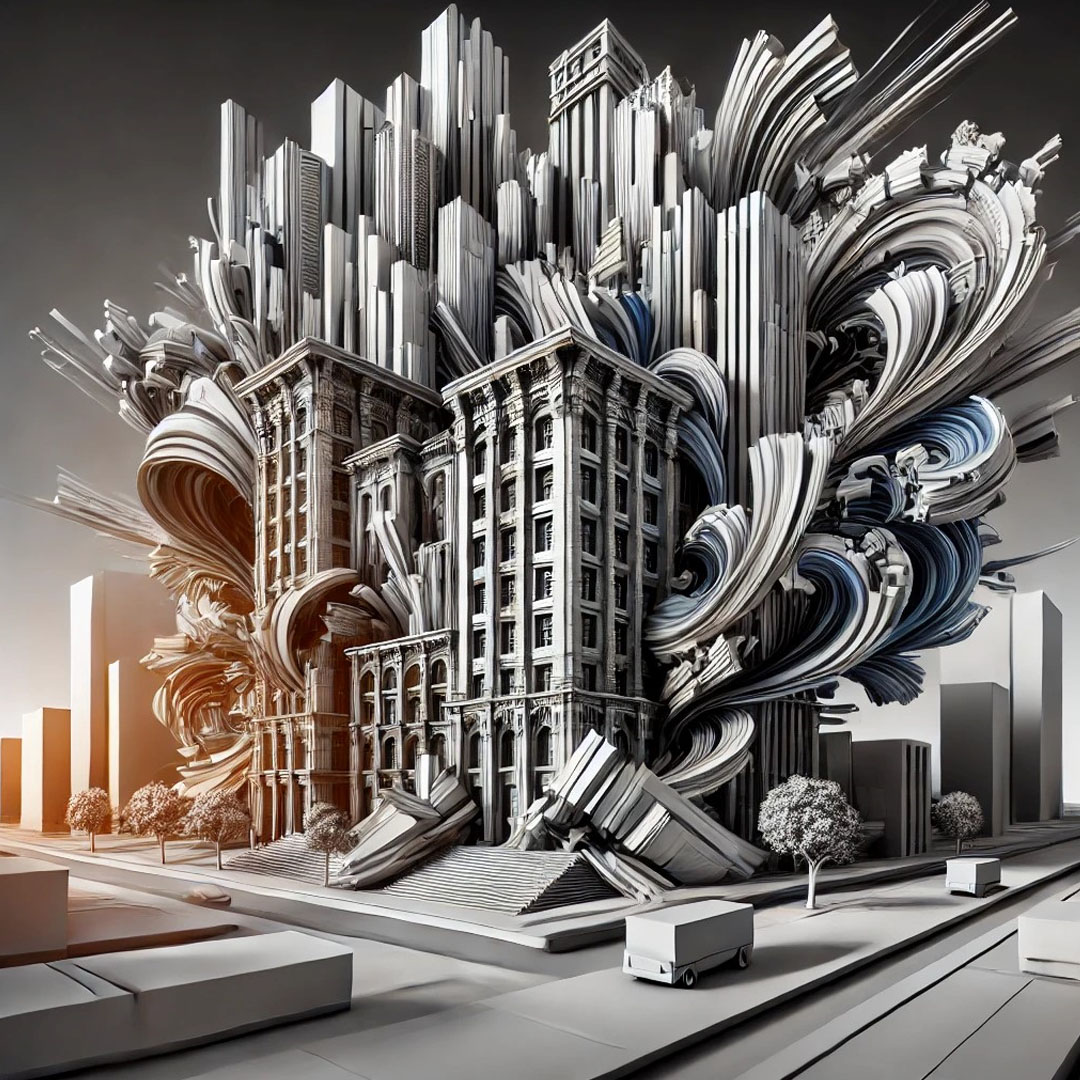Beyond Functionality: Architecture as Expression and Defiance
Architecture is not merely about constructing functional and aesthetically pleasing spaces; it is also an act of expression, defiance, and, in many cases, rebellion. In its purest form, architecture has the power to subvert norms, question the established order, and act as a catalyst for social and cultural change.
Transformation Through Design
Building a structure or a space is not just about addressing practical needs; it is an opportunity to propose new ways of seeing and experiencing the world. Every line, every form, and every material choice can serve as either a silent statement or a bold declaration against existing norms. Architecture, therefore, is not merely a reflection of society but also an active tool in its transformation.
In an era where architectural conventions often seem immovable, rebellion emerges as a path to reinvention. The creation of a space can transcend the limits of tradition, promoting new perspectives on habitability, sustainability, and social interaction. By challenging the paradigms of conventional architecture, new forms of expression arise, blending the rational with the emotional and the possible with the seemingly impossible.
Breaking Away from Convention
Rebellion in architecture does not necessarily mean destruction but rather the ability to think beyond the known. It can manifest as resistance to the uniformity imposed by globalized trends or as opposition to the structural oppression of certain urban systems. Each architectural project presents an opportunity to break imposed limitations, transforming a space into a place that not only meets needs but also challenges the context in which it was conceived.
This is architecture that goes beyond mere functionality. It dares to challenge expectations and seeks something deeper—a different way of experiencing the world. Rebellious architecture is also an act of freedom, where designers are not bound by conventions or social expectations but instead embrace the challenge of imagining and constructing a different future.
Architecture as a Driver of Social Change
Architecture as an act of rebellion lies in its ability to provoke thought. Every building or space designed has the power to influence the people who inhabit it, altering their perception of the world, their environment, and themselves. Rather than accepting the rigidity of established norms, architecture offers the possibility of reimagining the possible, redefining the impossible, and proposing new ways of living and coexisting.
Ultimately, rebellious architecture is not mere protest; it is a creative affirmation that seeks to transcend conventional limitations. It is a call to transformation and an invitation to reflection. Rebellion in architecture does not seek to destroy what exists but rather to build what could be.
A Path to Creative Freedom
This approach to architecture as an act of rebellion can also be seen as a continuous process of reinterpretation and resistance. In a world where demands for growth and development tend to follow a linear and predictable trajectory, rebellious architecture stands out for its ability to subvert these trajectories. Instead of simply going with the flow, it seeks to break norms and offer something new—something that genuinely reflects the concerns and aspirations of an evolving society.
Beyond Direct Opposition
Rebellion is not always about direct opposition; it can also be a subtle act of personal affirmation. Architects who embrace this challenging vision do not just question formal structures; they also challenge the implicit values behind them. They refuse to accept space as a closed, static concept. Instead, they seek to imbue it with life, meaning, and freedom. The spaces they create are not merely meant to be used but to be lived, interpreted, and constantly reinvented by those who inhabit them.
A Political and Social Act
In this context, rebellious architecture becomes a political act. It is not just a matter of aesthetics or functionality but a challenge to the forces that dictate how spaces should be designed and utilized. Every line drawn and every structure built carries a subversive message—rejecting homogenization, denouncing social exclusion, and advocating for spatial justice. In a world where social and economic inequalities are reflected in the built environment, architecture can and should play a crucial role in making these issues visible.
The Transformative Power of Spaces
However, rebellion in architecture is not always about opposing dominant institutions or systems. Sometimes, it manifests in small, thoughtful gestures that aim to transform everyday life. These seemingly invisible yet powerful details serve as reminders that space is not just a passive container for human activity but a dynamic force where humanity can flourish, question, and reimagine itself.
What makes this type of architecture radical is its ability to disrupt established expectations and offer a new vision of what is possible. By integrating elements of innovation, surprise, and defiance, rebellious architecture challenges what is considered “normal” in design and spatial interaction. It does not settle for what exists; it creates what should exist—what has yet to be imagined.
Reimagining the Future of the Built Environment
This challenging approach is also an invitation to continuously reflect on the future of the built environment. Instead of designing solely for the present, rebellious architecture looks forward, questioning how spaces can adapt to the ever-changing needs of humanity, addressing social, ecological, and cultural crises. Each intervention becomes an act of resistance against stagnation, encouraging exploration, creativity, and the constant reinvention of the world we inhabit.
An Act of Freedom and Reflection
Thus, architecture is not only about the art of creating spaces but also about the art of transforming thought, challenging conventions, and questioning the given. Through rebellion, architecture has the power to leave a lasting mark—not just physically but also in the collective consciousness of a society that dares to imagine and build a different future.


